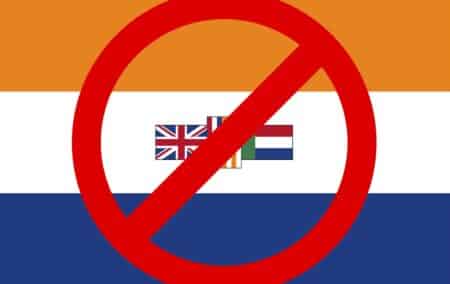In a clear display of the universally deprecated phenomenon of “judicial activism”, the Supreme Court of Appeal (SCA) recently handed down a judgment in which it effectively banned what has been dubbed as ‘the gratuitous display of the old apartheid flag’.
To someone without any practical legal training or academic background, the decision of the SCA in this matter can be seen as a progressive step towards the building of a ’non-racial society’ and by extension, the ’nation building project’.
However, as Professor Motala argued in his article, it is the task of jurists, and by extension legal commentators, to look not only to the result of a court decision, but more importantly to the quality and depth of reasoning, even if they disagree with the result.
The case concerned an appeal from the Gauteng Division of the High Court, Johannesburg, sitting as an Equality Court, which had found that the display of the old flag at the Black Monday protests organised by Afriforum constituted hate speech, unfair discrimination and harassment, within the meaning of the Equality Act.
Mr Sello Hatang of the Nelson Mandela Foundation testified before the SCA that the displays of the old flag, while he was giving tourists a guided tour of Robben Island, brought painful memories of his childhood to mind. He further testified that the old flag represents “nothing other than the inhumane system of racial segregation and subjugation that governed South Africa before 27 April 1994”, and that the gratuitous display of the old flag, more than a generation after the abolition of apartheid, reminded him that some South Africans still see him and black people as ”other” and would deny them the opportunity to be human.
In arriving at its decision, the SCA seemed to accept this testimony without any difficulty — holding that: “The message conveyed by gratuitous public displays of the old flag is plainly one based on race – apartheid and white supremacy”. According to the Court, the old flag, “is an awful reminder of the anguish suffered by millions of people under apartheid South Africa before the advent of democracy in 1994” … and it “causes offence and emotional distress”, and “symbolises, clearly and painfully, the policy and manifestation of apartheid”.
The problem with this new prohibition of hurtful speech is that it is subjective — in the sense that what is hurtful to one person may not be hurtful to another. More significantly, speech can be offensive, hurtful, uncomfortable and shock our sensibilities, but that is not what the Constitution prohibits. The threshold set by the Constitution requires that the speech must be harmful for it to fall outside the ambit of its protection — that is indeed a much higher benchmark than the “hurtful” standard which the SCA seems to have propounded in this decision.
The Court’s decision is also not in conformity with the Constitutional Court’s precedent set in Qwelane, where the Court interpreted the Equality Act as only prohibiting harmful speech and not hurtful speech. As the Court held: “the expression of unpopular or even offensive beliefs does not constitute hate speech”, because “a healthy democracy requires a degree of tolerance towards expression or speech that shocks or offends”. Citing the decision by the Canadian Supreme Court in Whatcott, the Court further explained that:
“Restricting expression because it may offend or hurt feelings does not give sufficient weight to the role expression plays in individual self-fulfillment, the search for truth, and unfettered political discourse. Prohibiting any representation which ‘ridicules, belittles or otherwise affronts the dignity of’ protected groups could capture a great deal of expression which, while offensive to most people, falls short of exposing its target group to the extreme detestation and vilification which risks provoking discriminatory activities against that group. Rather than being tailored to meet the particular requirements, such a broad prohibition would impair freedom of expression in a significant way” (Whatcott: para 109).
How the SCA overlooked all of these in its ruling boggles the mind.
By way of an example, I generally find the continuous annual display of the Sarafina drama on our television screens by the SABC as very hurtful, morally shocking, and uncomfortable. It is indeed the closest reminder of the morally corrupt, evil, and murderous apartheid regime, arguably more so than the gratuitous display of the apartheid flag even for those of us born in a constitutional democracy. It invokes feelings of hatred towards white people, and undermines the very lofty constitutional ideal of building a non-racial society and encouraging national cohesion.
And since we live in a society of counterfactuals and whataboutisms, one can simply ask: why not ban it as well?
To answer my own rhetorical question, the reason for the continuous annual display of that historical drama seems to be that it does not shock and offend the sensibilities of black people, but feeds into them (I say this fully aware of the pushback it may generate).
If all that history does is to bring painful memories and emotional distress, then we must ban it in all its manifestations. This might include banning even the Sarafina drama and similar television dramas which invoke painful memories and emotional distress.
In fact, if the SCA’s decision is anything to go by, a strong mention can also be made for the banning of the ANC flag. After all, that flag has come to symbolise corruption — it causes emotional (and even real) distress and pain to many of us.
The views of the writer are not necessarily the views of the Daily Friend or the IRR.
If you like what you have just read, support the Daily Friend.

